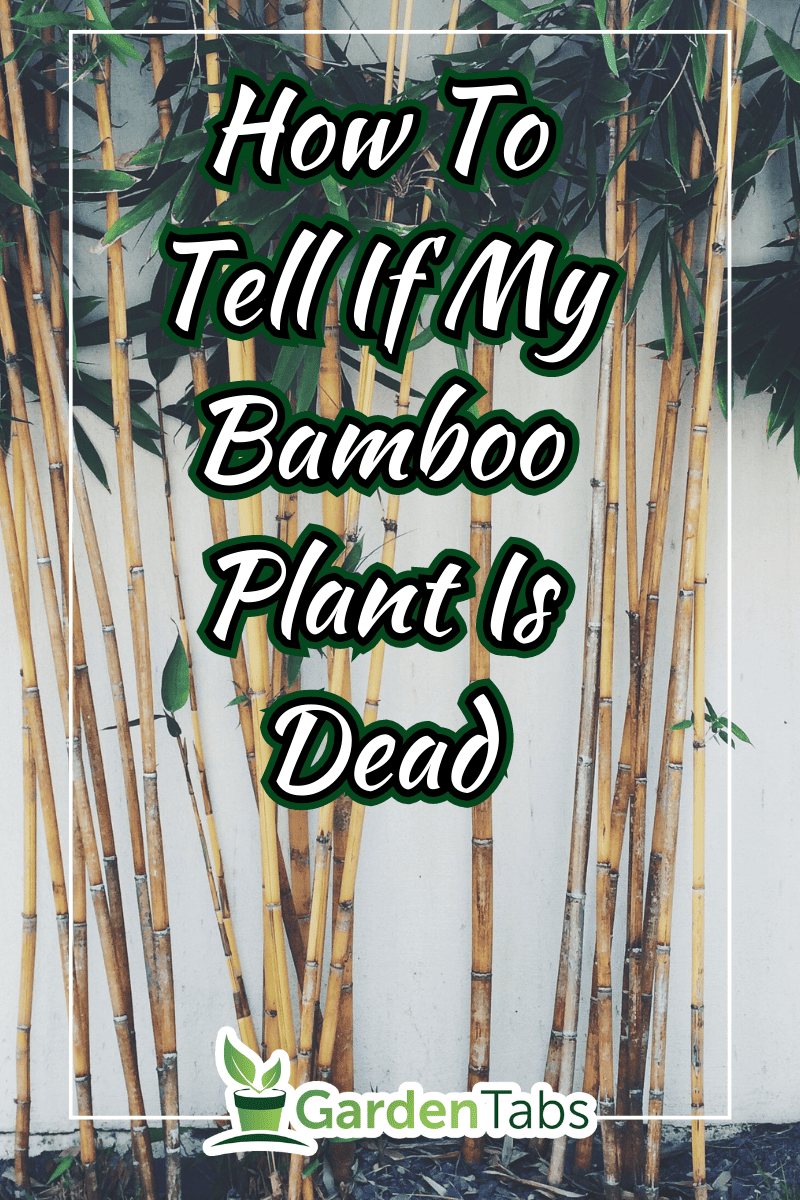Many plant enthusiasts incorporate bamboo into their gardens because of its versatility and tropical appeal. They grow rapidly and are relatively easy to maintain. However, if certain conditions are not met, your plant may exhibit signs of deterioration. Read on since we have researched how to tell if your bamboo is dead.
The first signs of unhealthy bamboo are the yellowing of the stalks and the leaf tips turning brown. If unchecked, the entire plant becomes affected, and the shoots darken and become pulpy. To prevent this, cut the dying portion to keep it from spreading while stimulating new growth.
There are several reasons your bamboo may be dying: light, water, and soil nutrients are definite factors to consider. Read on and find out the signs, reasons, and remedies you can do to revive the plant.
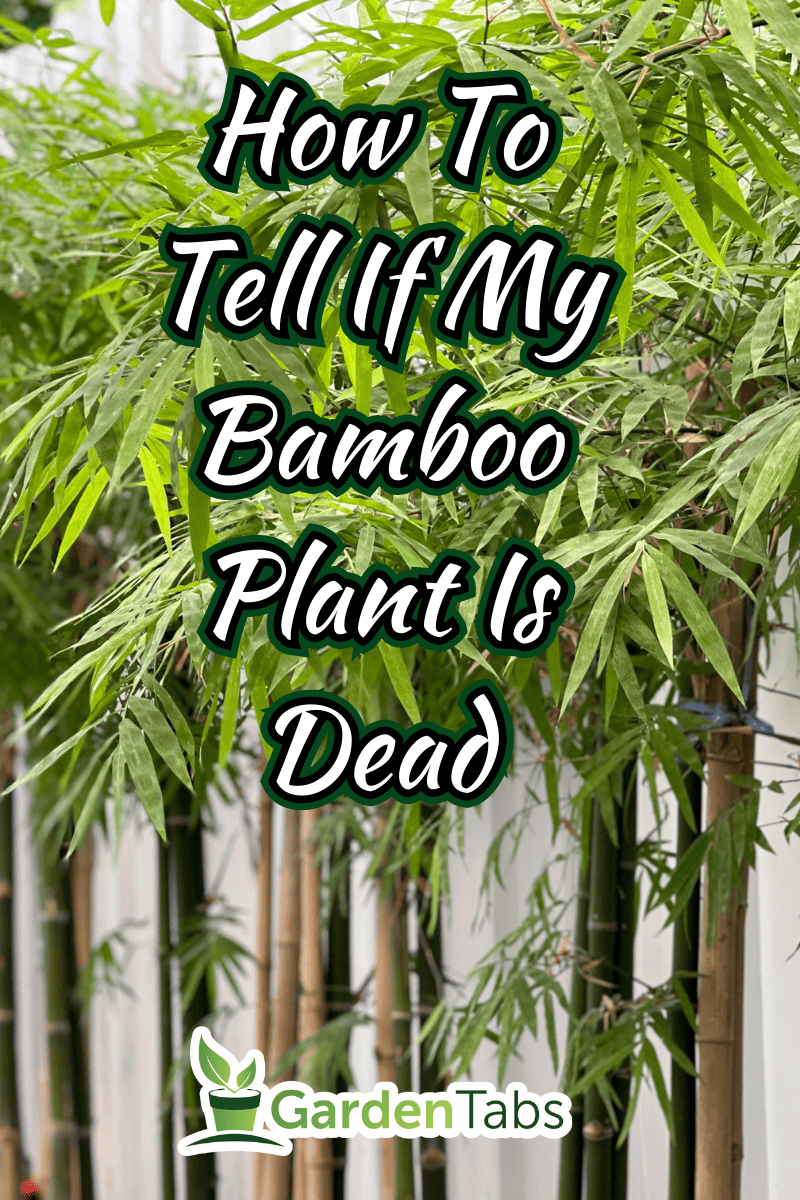
Dying Bamboo Plant: Signs, Reasons, And Remedies

Typically, bamboo plants grow rapidly into dense groves that require little to no maintenance. They are highly adaptive, and most varieties can thrive in different conditions when left in the wild. The requirement needs of bamboo change when they are cultivated for gardens or grown in pots.
Yellow Leaves And Stems
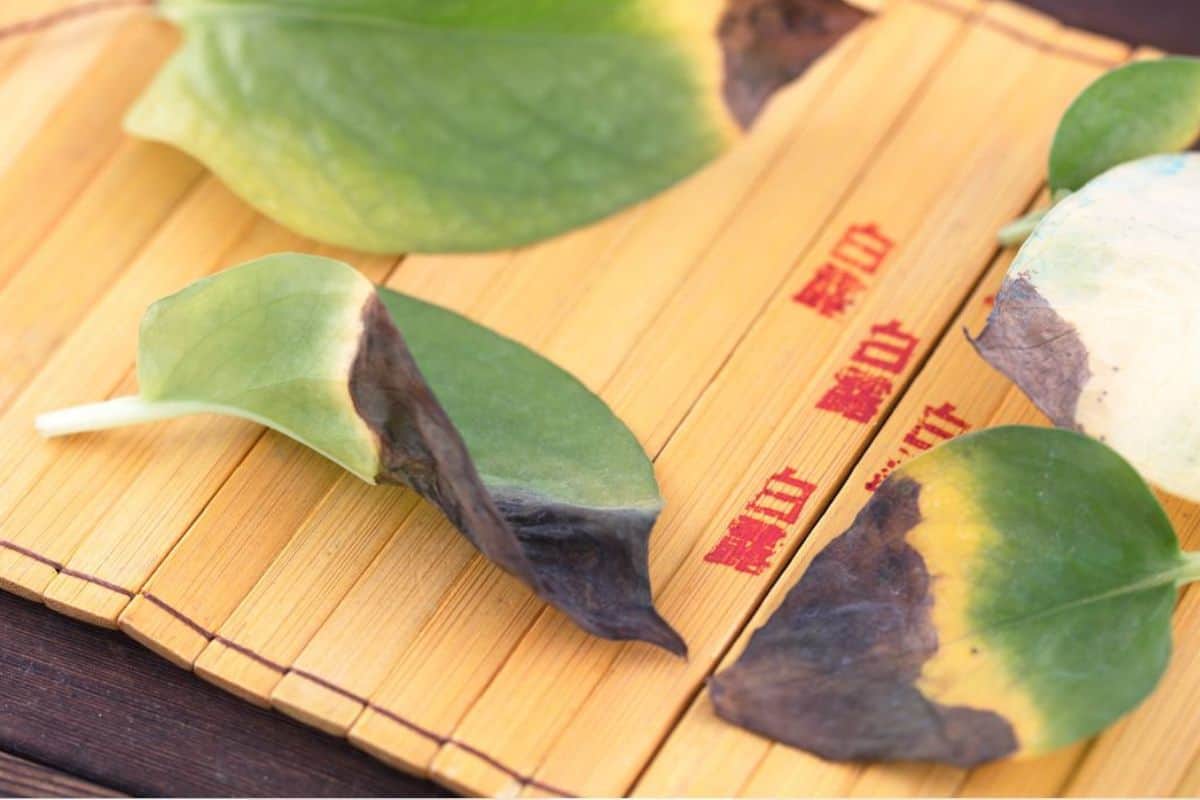
Healthy bamboo plants have green leaves and stems, and yellow discoloration is the first sign of stress. Eventually, the foliage droops, turns brown, and falls off. It usually starts on the upper portion of the plant and spreads downward if unchecked.
Direct sunlight is the most common cause of leaf burn, especially among young, unestablished plants. Too little water can also result in the stems yellowing.
At this point, it is relatively easy to help the plant recover.
Bamboo thrives best in indirect light and moist soil, and although some varieties can tolerate full sun, the heat tends to cause moisture to evaporate rapidly.
If potted, you can simply place the bamboo in a partially shaded area or replant soil-bound ones away from direct sunlight. Water them thoroughly twice a week and apply a layer of mulch around the base.
Edges And Tips Of Leaves Turning Brown
If the condition persists or worsens even after you have transferred the plant to a shaded spot, chemicals in the water may be causing the leaves to wilt. The leaves take on a brownish hue that slowly spreads and darkens until large sections of the foliage are stripped.
Tap water contains chlorine and other substances meant to inhibit the presence of microorganisms. However, they tend to interfere with the growth of roots in bamboos and most other plants.
Other impurities that penetrate the stems result in dark spots that weaken their structure and cause them to snap or break.
Use filtered water or rainwater to hydrate your bamboo at least once a week and monitor the soil moisture levels. Most species require constantly damp environments and are sensitive to drought. For potted plants, check the drainage and water them sparingly. A layer of mulch would maintain the moisture and create a regulated mix.
Dead Leaves And Stems
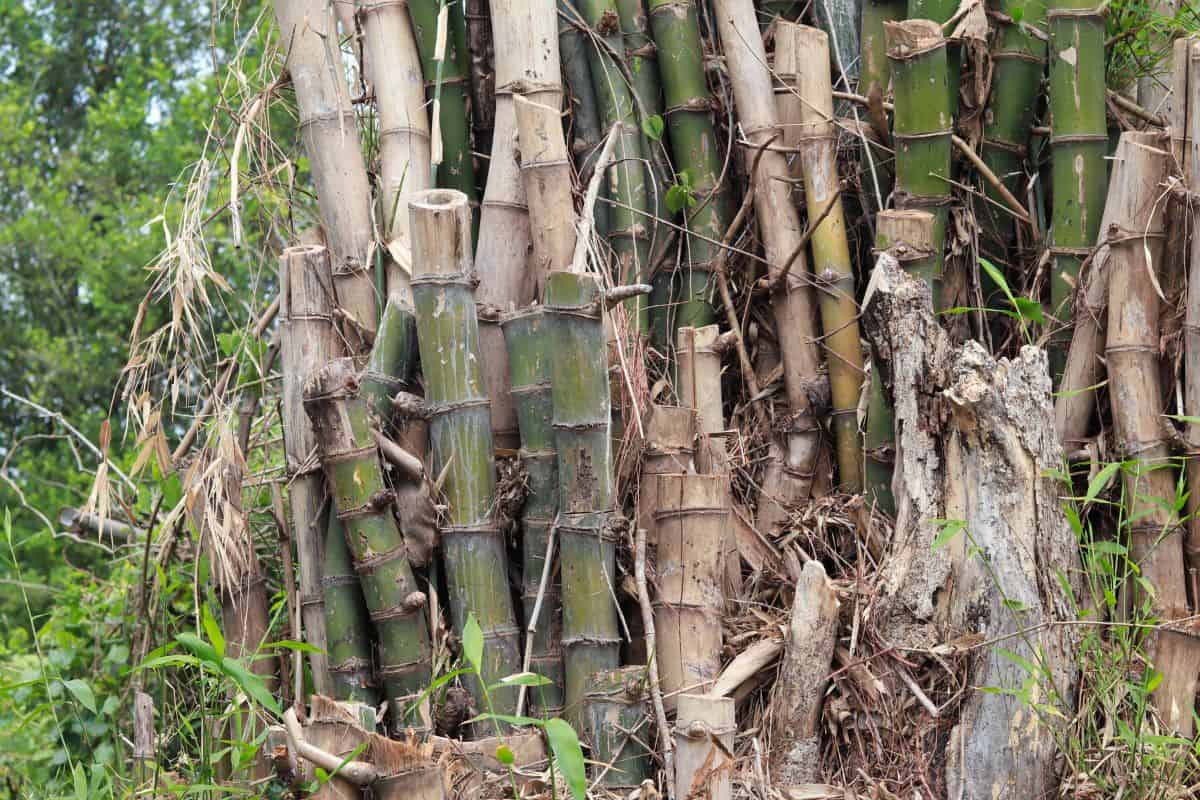
Dying leaves and stems may be caused by a lack of nutrients. Naturally growing bamboo requires little to no maintenance, but cultured varieties are grown away from their habitat. Changes in the soil, water, and light conditions would produce dieback in portions of the plant.
Potted bamboo may be root bound, meaning the soil content has been consumed, and there are no available nutrients for the plant. The absence of sodium will result in poor leaf growth, while the lack of potassium and phosphorus affects water uptake and root development.
Prune off all dead portions of the plant before introducing additives. Removing dieback would rejuvenate the plant and encourage the growth of new shoots.
Use an all-purpose complete liquid fertilizer in dilute form to avoid root burn. Once you notice the emergence of new growth, you can repot the bamboo in a container twice the size of the former one.
Check out EZ-Gro All Purpose Liquid Plant Food on Amazon.


The Bamboo Plant: An Overview
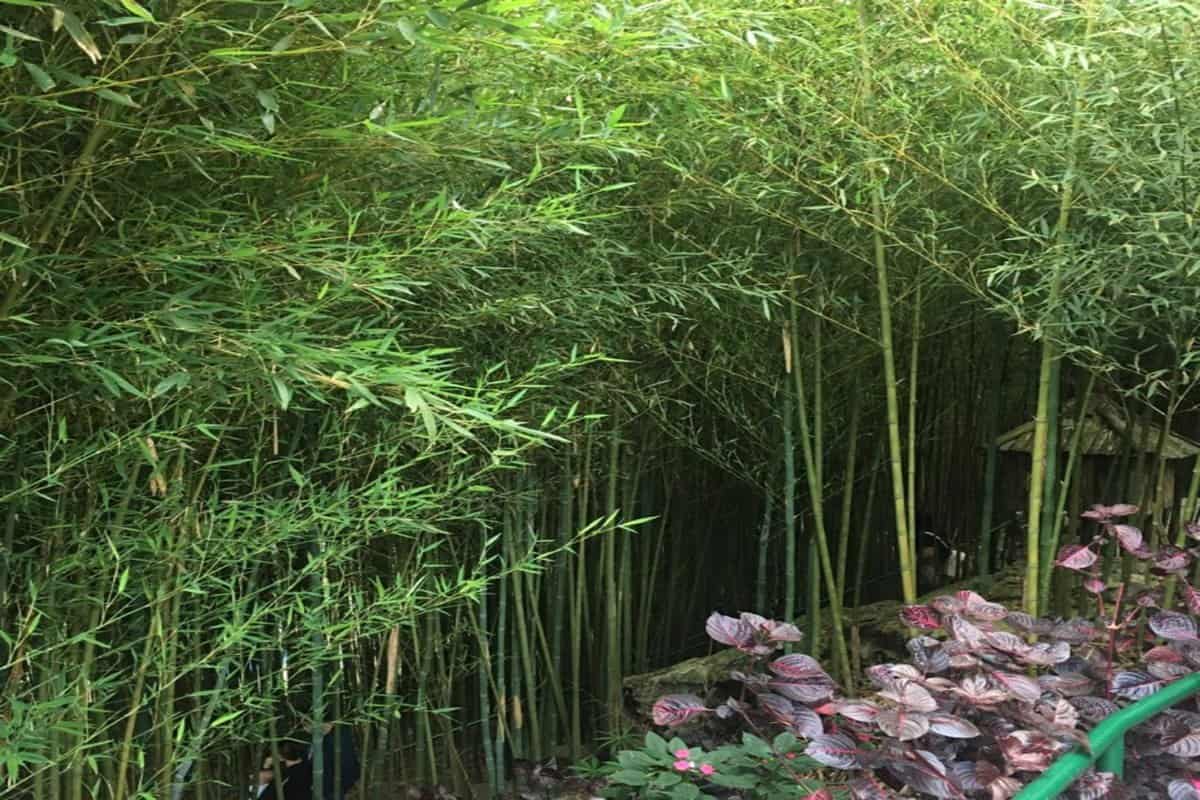
Bamboo is a grass that develops thick woody stems known as culms which are separated into sections by the nodes. Before planning to plant or grow one, be sure which type to purchase.
Based on their growing habits, bamboos are categorized as either clumping or running varieties. The former is less aggressive, and the shoots tend to grow close to the mother plant. This creates a confined pattern that is easier to control and maintain.
Running bamboos, as the name implies, tend to spread more aggressively and may invade an entire yard or area. They develop a specialized stem form that grows underneath the ground and creates new sprouts.
To control the rhizomes from spreading in your garden, you can easily contain them in a pot. If they are already planted on the lawn, use an in-ground garden edging to create a well-defined border.
How To Care For A Bamboo
Established bamboos are easier to care for because they only require little maintenance. Here are the ways you can do so:
Light
Sunlight needs vary depending on the variety you own. Some species grow well in full sun, while other kinds prefer to be planted in areas with partial or indirect light.
If you have an indoor bamboo, situate it in a corner where it can receive morning sunlight every day.
Water
Bamboos generally prefer moist environments, so always keep the soil hydrated. It needs to receive at least one inch of water every week. However, do not over-moisturize your plant since it can cause root rot or decay.
During long drought periods, it is best to water them more often or whenever you see that the topsoil is already dry.
Soil
Plant your bamboos in a slightly acidic but well-draining soil rich in organic nutrients. If you intend to contain them in a pot, you can purchase a potting mix at your local garden store will suffice.
Check out this Bamboo Plant Potting Soil Mix on Amazon.


Bamboos generally thrive in moist environments. If you want to keep the soil damp, you can place a layer of mulch on top of the ground. Take note that the leaves falling off from the plant will also act as mulch, so it is not necessary to rake them.
Fertilizer
Generally, bamboo thrives under the proper conditions of moist soil and, depending on the variety – adequate sunlight. They do not necessarily need fertilizers or additives to survive since the active root system gets nutrients from its surroundings.
However, bamboos may require fertilizers if they are grown in a container. The limited space will inhibit the root’s growth, and as such, root-bound bamboos will not be able to acquire its needed macronutrients.
Potted bamboos need to be fed twice a year with plant food that is high in nitrogen – first, at the beginning of spring and second, during the summer season.
Temperature And Humidity
Since bamboos are native to Asia, they typically grow in temperate or tropical regions. However, some species can thrive in areas with cold climates. It is best to determine the variety you own to identify the temperature most appropriate for them.
If you reside in colder regions, you may want to grow species of hardy bamboos. Although they can survive the winter season, it is necessary to apply a layer of mulch to protect the roots from the winter frost.
Pruning
If your potted bamboo becomes too congested, you can begin to prune or thin out some of the outer canes for proper air circulation. Remove all thin, damaged, and dead stems by cutting them to their bases.
Should I Cut Yellow Leaves Off Bamboo?
Yellowing leaves should be immediately pruned or cut to encourage new growth. It is not good practice to wait until the foliage turns brown or black since doing so will generally cause the decay to spread quicker.
Does Bamboo Grow Better In Water Or Soil?
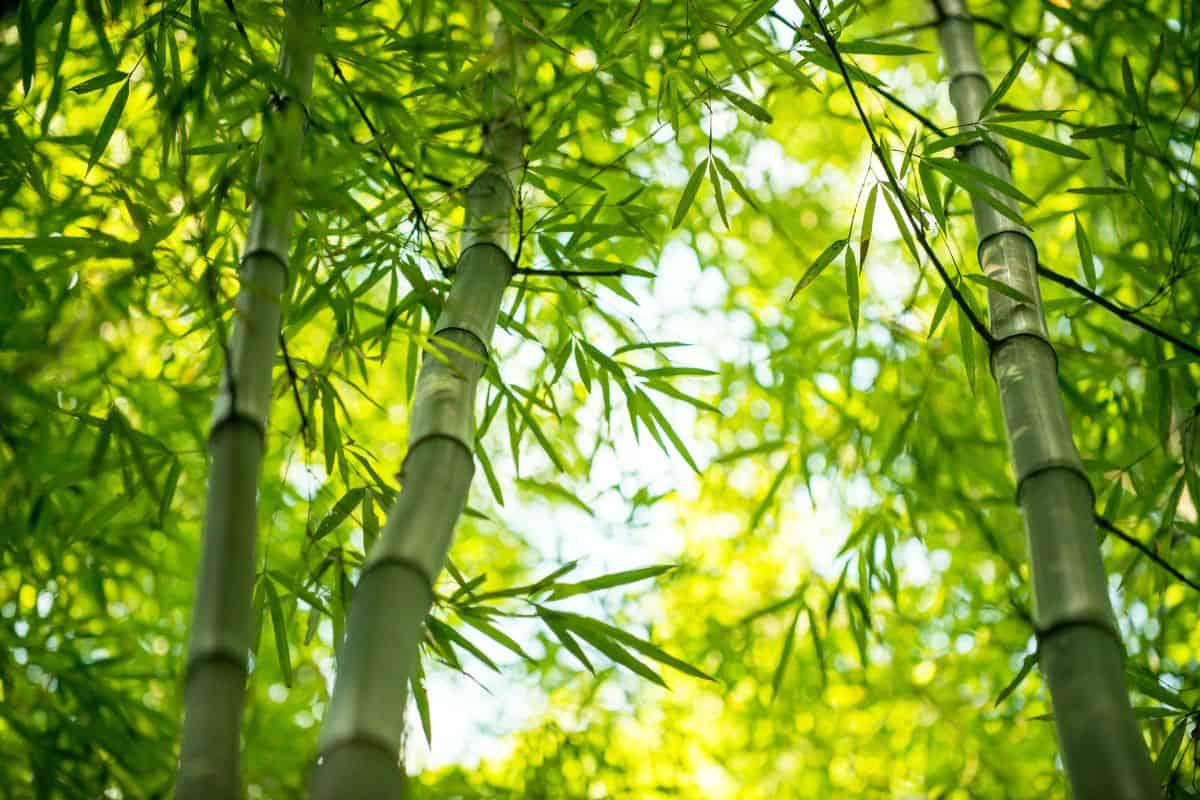
A few species of bamboo may be grown in water as long as only the roots and not the stem is submerged. You have to use filtered or rainwater since chlorine in tap water has harmful effects in the plant.
However, if you wish to propagate and grow your bamboo faster, soil is a better medium. A regular potting mix in your local nursery will do.
In Closing
The reason your bamboo may turn yellow or brown and wilt in certain portions is due to direct sunlight, lack of water and soil nutrients. Look for the early signs of plant stress and address the issue right away. We hope the article proved helpful in dealing with the problems you encounter with your plant.
You might also find these topics informative:

